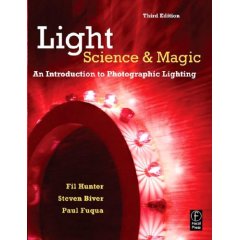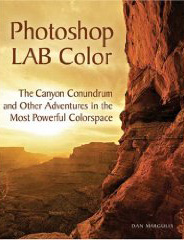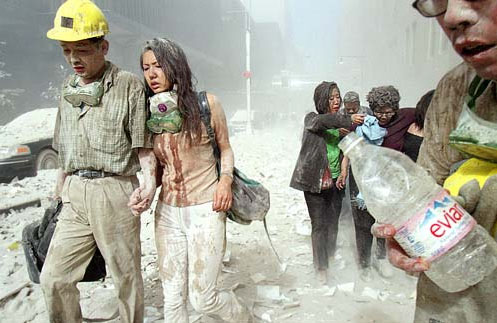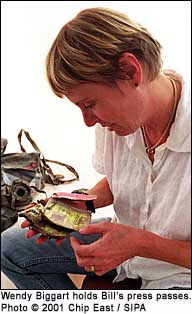Short List:
SanDisk
Lexar
Memory cards are the “film” for your digital camera. You don’t want to have a card failure and lose your photos. A reliable brand is important.

Short List:
SanDisk
Lexar
Memory cards are the “film” for your digital camera. You don’t want to have a card failure and lose your photos. A reliable brand is important.
The first step to photographing wildlife is finding wildlife. In the case of common wildlife, that’s easy. If you are looking for squirrels you may not need to look any farther than your own back yard. But if you want to photograph something a little more exotic, like Chachalacas or Green Jays, you need to know where to look for them (the southern tip of Texas).
Want to be a better nature photographer? Read anything by John Shaw, Galen Rowell, Art Wolfe, Freeman Patterson, Tim Fitzharris, George Lepp, Larry West, Arthur Morris, Allen Rokach, John Netherton, Leonard Lee Rue III, Brenda Tharp, and the Stackpole (publisher) nature series.
Here are some specific books to look for.
The short list:
The Joy of Photographing People, Kodak
Robert Caputo, National Geographic Field Guide: People & Portraits
The Portrait: Professional Techniques and Practices, Kodak Workshop Series
Steve Sint, Digital Portrait Photography: Art, Business, and Style
Christopher Grey, Master Lighting Guide for Portrait Photographers
Jeff Smith, Posing for Portrait Photography: A Head-to-Toe Guide
You can learn more about these books, and buy them, by going here.
This is a list of books that I found the most helpful when I took a serious interest in photography. These books were written back when film was king, but that makes them all the more valuable to today’s digital photographers. Some digital photography books get so lost in technical information that the heart and soul of photography can get lost. The best film photography books are about light and shadow, subjects, form, texture, line and shape – all of which applies to digital photography. Some of these books are out of print but well worth finding on the used book market.
Interested in getting into astrophotography? Here’s my advice.
I have no idea when I was first entranced by the photos of Ansel Adams. There is a wonderful, luminous quality to his work. Small wonder he is America’s best known landscape photographer. Collections of his work would make a worthy addition to any photographer’s library. This is also the time of year that Ansel Adams calendars pop up like snowstorms.
The best advice I can give you is not to buy any collection of Adam’s work, either book or calendar unless it is published by Little, Brown and Company, or by NYGS (New York Graphic Society, which is also published by Little, Brown).
Why?

Many photographers would say LIGHT: SCIENCE AND MAGIC is THE best book on photographic lighting – and I agree with them. If you intend to be seriously involved in photography, this book should be on your required reading list.
If you want to master Photoshop, a complete course can be found in the books in the posts below.
FOUNDATIONS
Begin with one or two of the basic to intermediate books in this post. After that, jump into the list of advanced books in the posts below.
ADVANCED SKILLS AND TECHNIQUES
Your image processing begins with how you process your RAW files with Adobe Camera Raw (ACR). One of your best guides is Bruce Fraser and co-author Jeff Schewe. What you do with your RAW files determines how much or how little you can do with the file later on in Photoshop. You maximize your possibilities later on by making the right choices in ACR. Make the wrong choices, and you have limited what you can do later on.

Two essential and challenging Photoshop skills are Masking and Compositing. Fortunately for all of us out in Photoshop land, Katrin Eismann has written a masterful book on developing these skills, Photoshop Masking & Compositing.
You will learn about selection tools and techniques, how to use masks and layers, advanced selection techniques for difficult subjects like human hair, and how to do flawless composites.

Katrin Eismann is a world class expert on photo retouching. She is one of the best of the best. In 2005 she was inducted into the Photoshop Hall of Fame. Anything she writes should be high on your reading list if you are serious about making the most of your Photoshop skills.
Adobe Photoshop Restoration & Retouching (3rd Edition) has become a classic and it is is now in its third edition. You would be hard put to find a better book on Restoring and Retouching photos with Photoshop. Once you’ve learned the basics of Photoshop, this book is a must read. Just look at all the 5 star ratings at amazon.com and read the glowing reviews.

Everything you need to know about Dan Margulis is in Advanced Color Correction, Part One.
After you have devoured the book I recommend in that article, you will know why you need to get Photoshop LAB Color: The Canyon Conundrum and Other Adventures in the Most Powerful Colorspace.

If you want to master color in Photoshop, Dan Margulis is the best of the best. He is one of the first three persons to be named as a member of the Photoshop Hall of Fame. And the book to get is Professional Photoshop: The Classic Guide to Color Correction (5th Edition). What Margulis teaches you to do with color is amazing. The before and after images will make your jaw drop.
If you aren’t shooting RAW files with your digital camera (as opposed to jpeg files), you should think about the advantages of shooting in RAW. Read the articles RAW vs JPEG Camera Files and The RAW vs JPEG Exposure Advantage at my photography web site.
A lot of the quality of your final image will be determined by what you do with your RAW files when you open them in Adobe Camera RAW (ACR).
How do you learn the basics of Photoshop before going on to the books I recommend in the MASTERING PHOTOSHOP series? Look at the books below. And why did I lump Photoshop together with digital photography? Because some of the basic and intermediate books cover both.
There are any number of good, basic and intermediate photoshop/photography books. Look for books by Tom Ang, Rick Sammon, Tim Grey, Martin Evening, Bruce Fraser, and Scott Kelby. Also worth reading are Deke McClelland, Barbara Obermeier, and Peter Bauer who authored the popular “Dummies” series of books for various versions of Photoshop.
Continue reading
I have no idea how Michael Freeman can be a well traveled, international photographer and still find time to write so many terrific photography books. But somehow he manages to do both. I suspect he never sleeps. I imagine him creating images and writing books 24 hours a day, stopping only to eat once or twice a week!!
Is composition something that can be taught, or if it is innate? Probably a bit of both. It is hard to look at photographs by Frans Lanting, Art Wolfe, Galen Rowell, and Dewitt Jones without coming to the conclusion that they were born with some kind of magic sense of composition. On the the other hand, it is clear that photographers can improve dramatically with the right kind of guidance.
Off-camera flash can provide more pleasing light and a much more dramatic photograph than on-camera flash. Using two off-camera flash units provides even more dramatic lighting possibilities.
People generally look best when you photograph them in soft light. That’s why studios bounce the studios lights off of big umbrellas or through big “soft boxes” to widen and soften the light. The umbrella or soft box mimics the nice soft light you get on a “cloudy bright” day when there are just enough clouds to soften the light and minimize shadows.
Michael Fulks, the publisher of Apogee Photo Magazine, wrote at an excellent review of Digital Photography Exposure for Dummies in his magazine. Here’s the review:
Off-camera flash is so useful because it gives you a different look from the millions of photos that are taken with the flash on the camera. The light can come from any direction you choose, no matter where your camera is, and the latest technology makes automatic flash exposure quick and reliable.
Updated Dec. 26, 2011.
It’s that time of year with the holiday season approaching and I am already getting questions about which digital cameras I recommend. The camera lists below will point you to the highest rated models, along with information and advice. The lists will be updated throughout the holiday season as new, highly rated cameras become available.
Canon introduced the new EOS 1D X today, the new flagship, pro level camera that replaces both the EOS 1Ds Mark III and the EOS 1D Mark 4. It is an 18.1 Megapixel, full-frame DSLR with a high-precision 61-point AF system, an ISO range that’s expandable up to ISO 204,800, and a top shooting speed of 14 frames per second (fps). Details are here.
If I am using flash for an environmental portrait, I usually prefer having the flash off of the camera. In this portrait of Warren Stevens (program director and mid-day air personality at Magic 106.3 FM in Columbus), the flash is above Warren and to his right, providing a nice semi side-lit photograph. On camera flash is flat and even. Getting the flash off of the camera and moving it to the side provides more shape and texture to the subject.
I’ve photographed people in a lot of different occupations, but this is the first time I’ve worked with a professional fitness trainer. Sarah Gearino (“Body Evolution by Sarah”) is taking on more clients and she wanted photos for her Web site (which is currently in the planning stages).
Fall color is sweeping the country. To make the most of it, you want to be at the right place at the right time. Fortunately, that’s not hard to do.
The Committee to Protect Journalists (CPJ) released a list of the 13 most dangerous countries based on unsolved murders of photojournalists and weighted by population.
I first ran this post on the 5th anniversary of 9/11.

Photo by James Nachtwey for TIME magazine.
On this date, five years ago, we experienced a great national tragedy in the United States. Not only in the lives that were lost in the terrorist attacks, the families torn asunder, and the emergency responders who are suffering terrible health problems as a result of working at the scene – but also in the way we view ourselves and our world.
The photo essays linked below are a reminder of what we all went through on that fateful day.

Bill Biggart’s final photograph. He was killed when the second World Trade tower collapsed on top of him. He was 53 years old.
You can read the story about Bill Biggart’s last images and see an album of his last photos at The Digital Journalist.
You can see other 9-11 photo albums by Chip East, Peter Turnley, David Turnley, and Aris Economopoulos.

